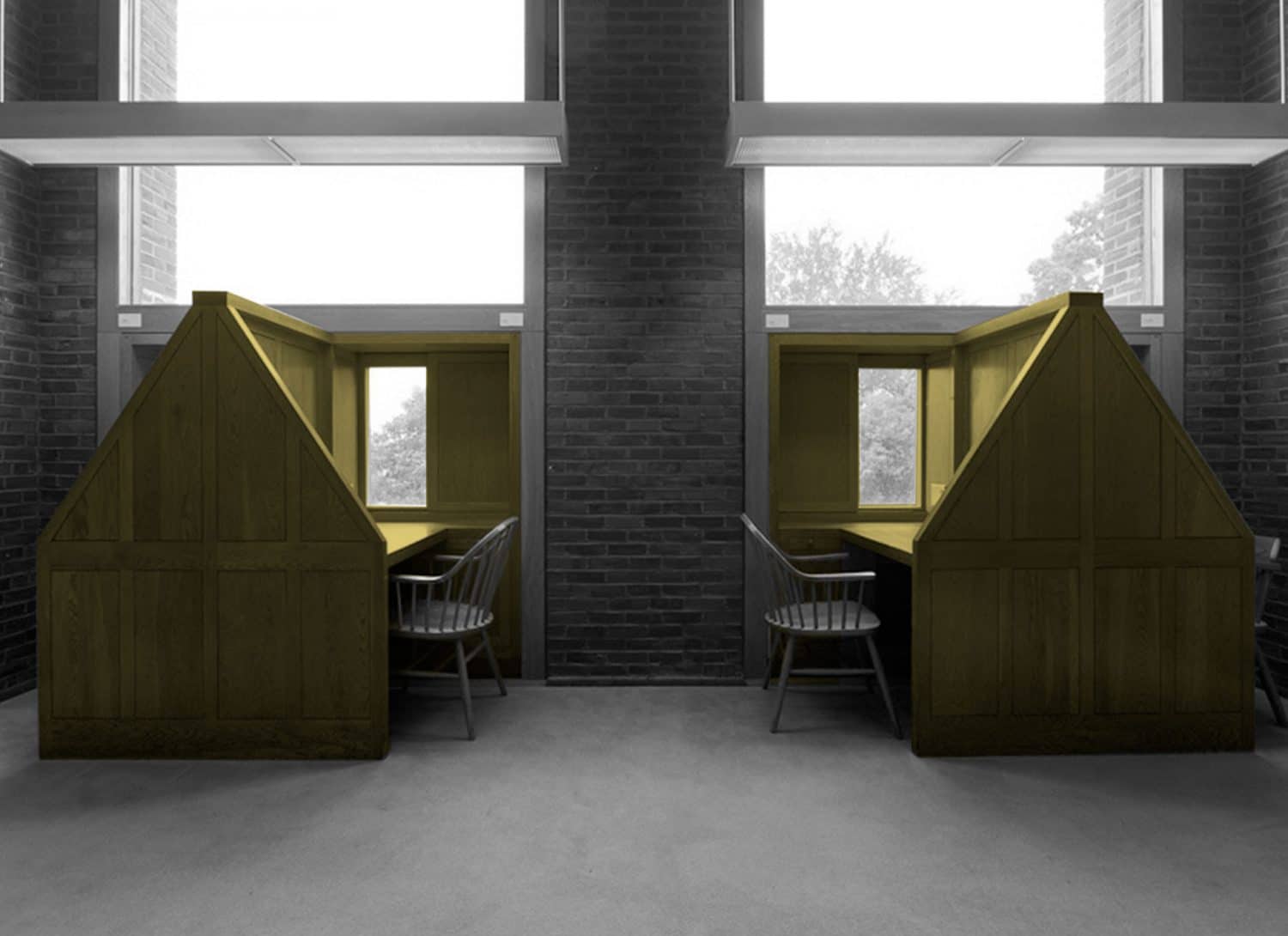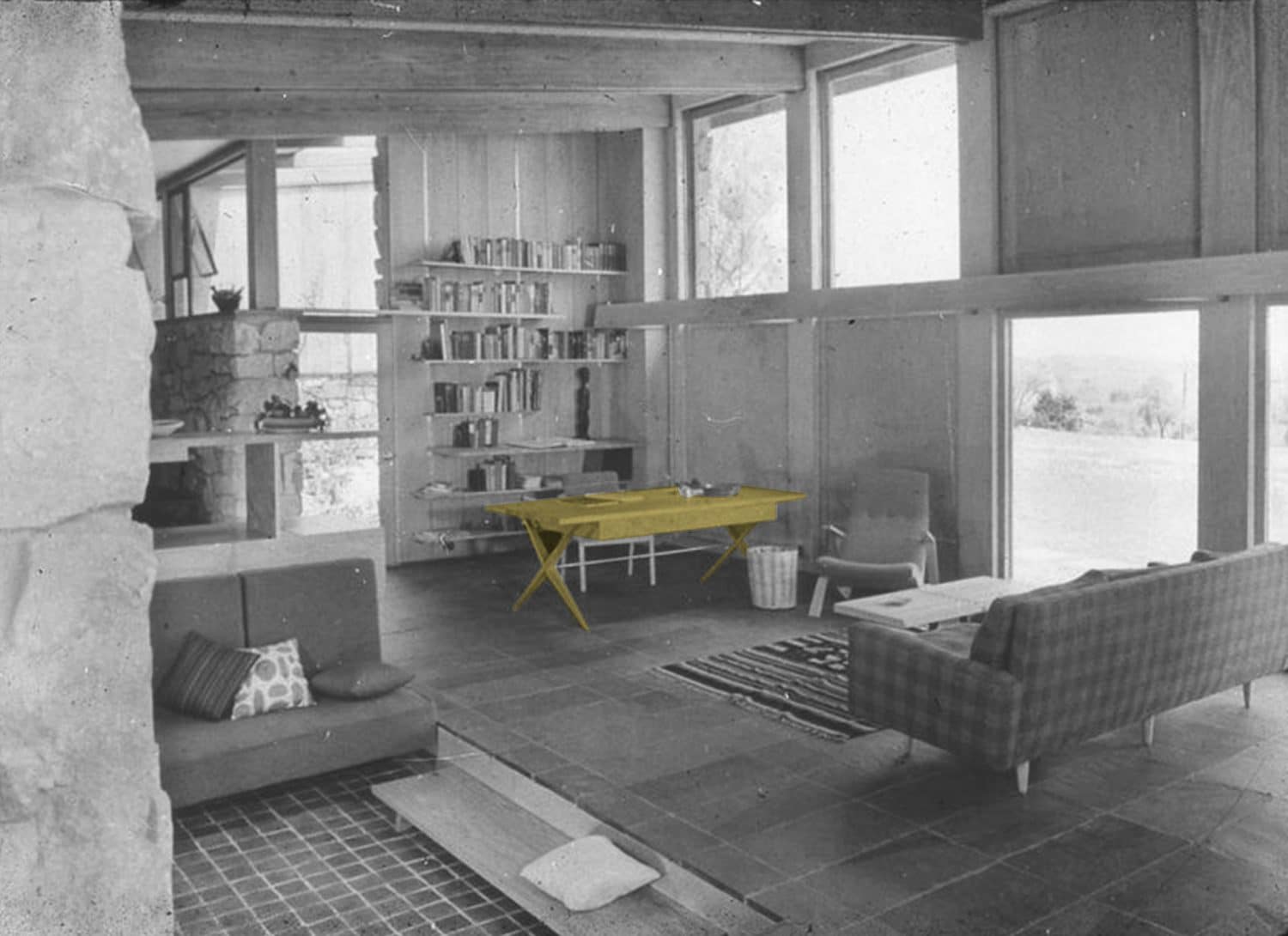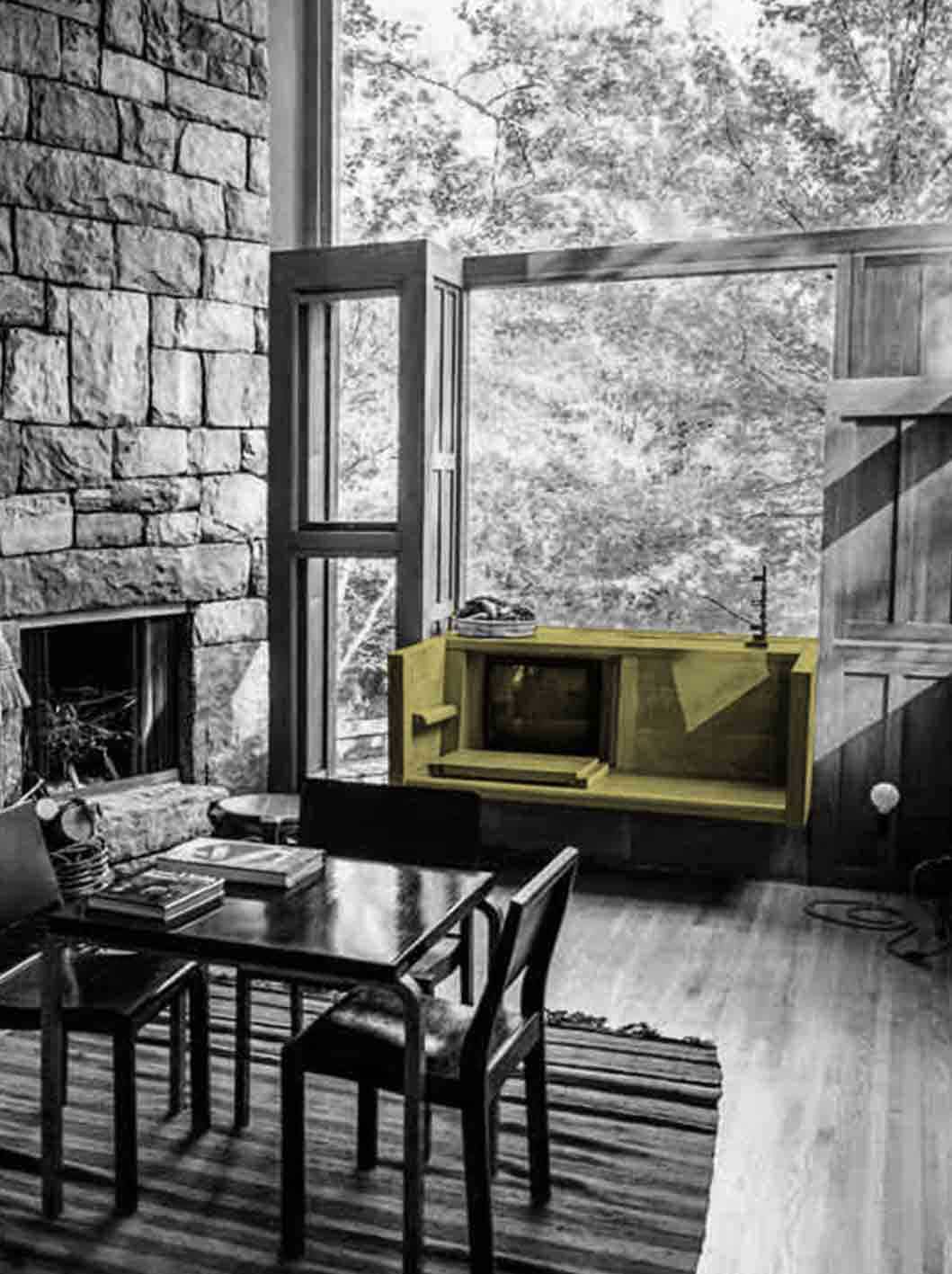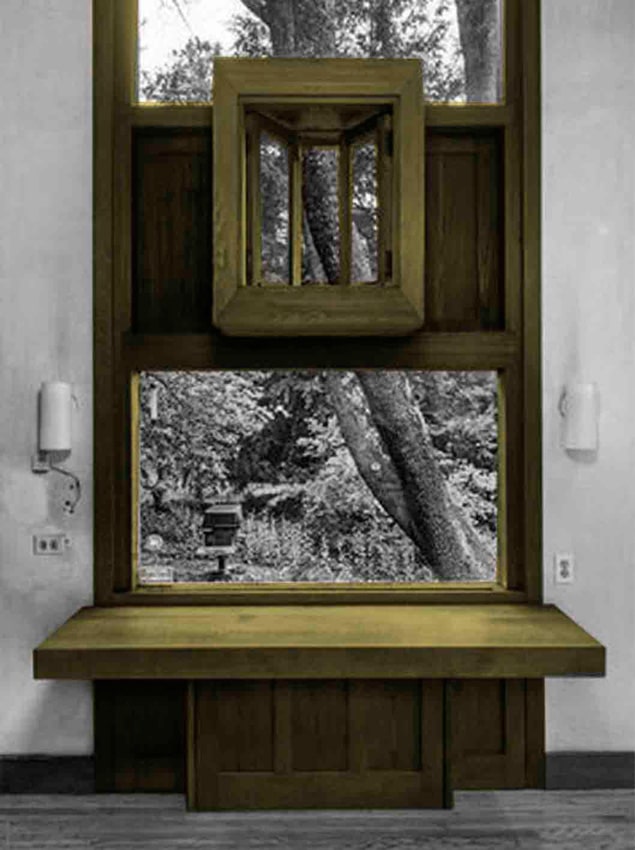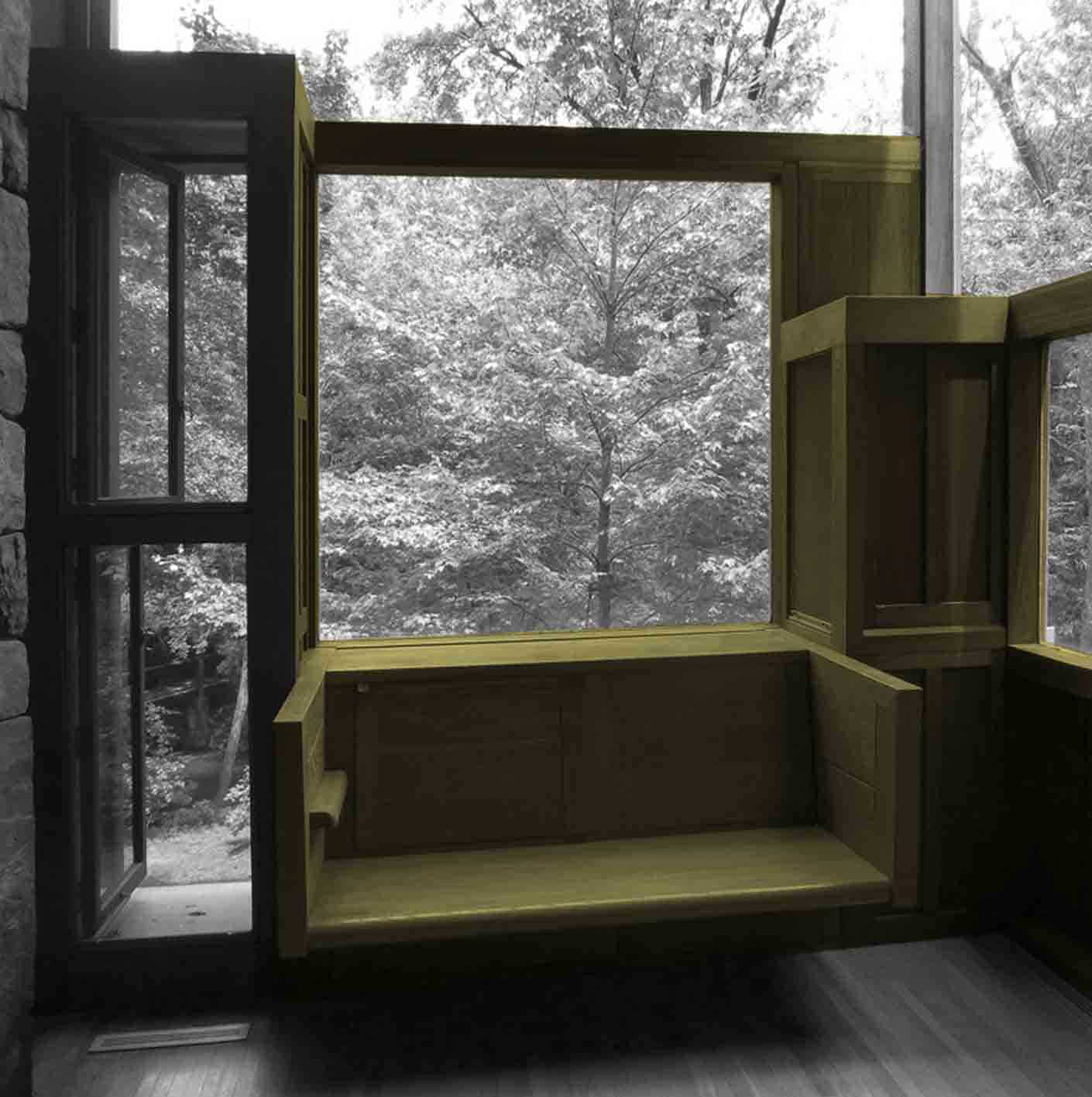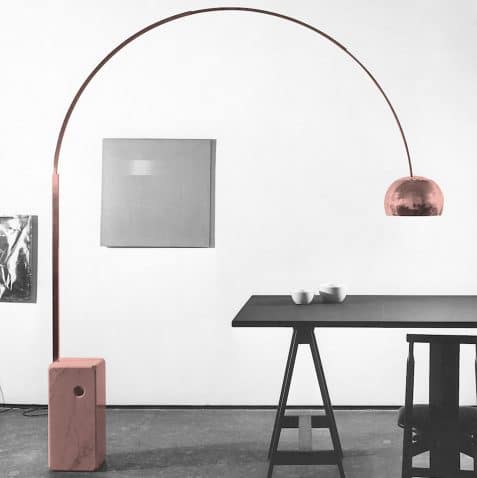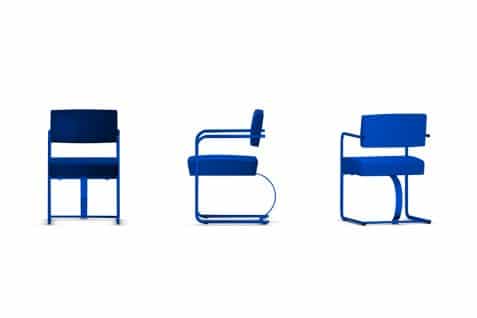INTERIOR
Louis Kahn’s domestic monumentality #Louis Kahn
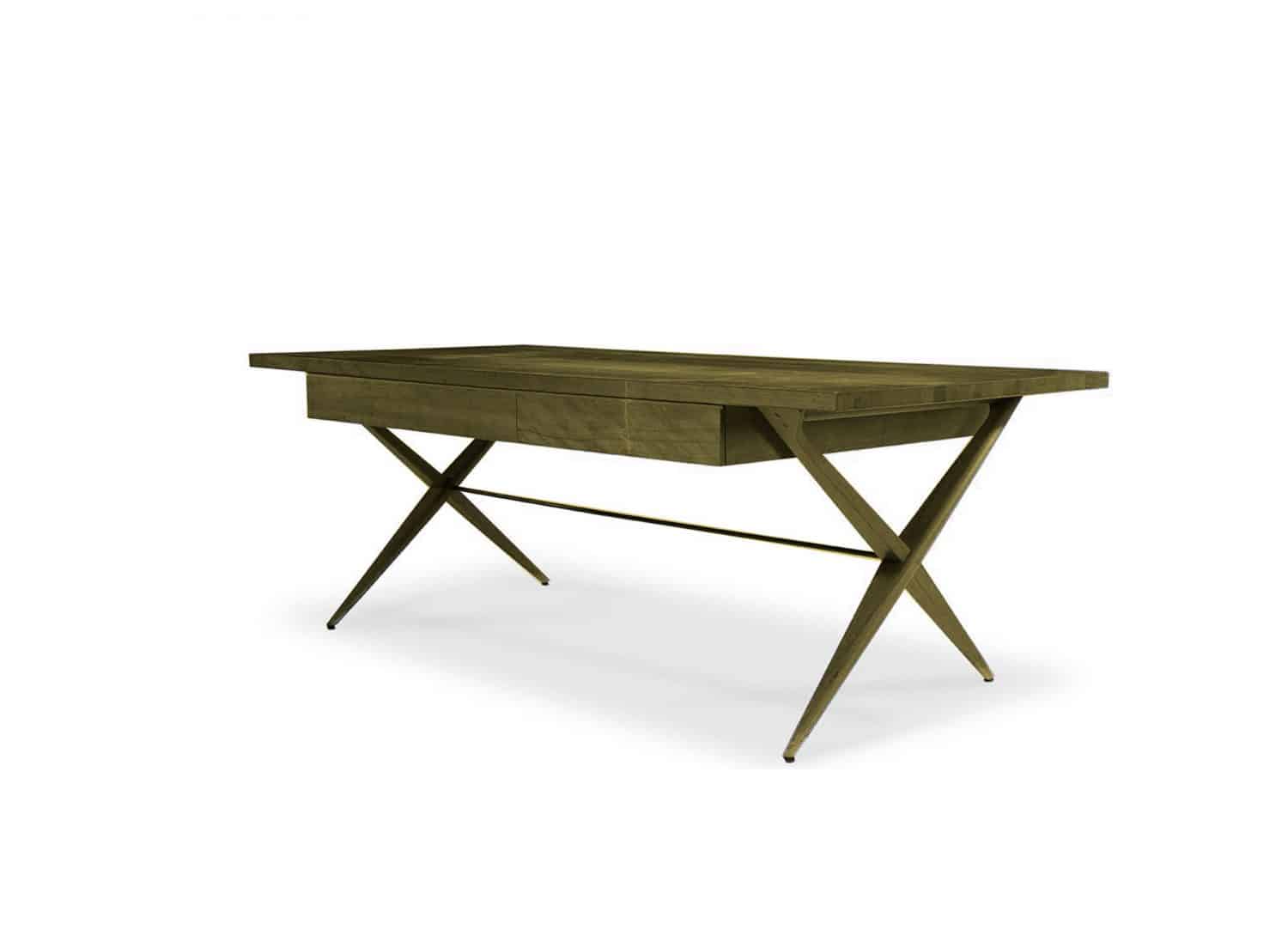
There is a longing for monumentality and transcendence in Louis I. Kahn’s work that make human scale and daily life apparently alien. However, we can find in the Exeter Library the reading carrels, with their characteristic pitched outline, that reintroduce human scale into the monumental space defined by the concrete walls and the enormous circular holes. In his domestic buildings, Kahn designed thoroughly the furniture to suit the structural space and the owners’ particular requirements.
Anne Tyng’s involvement, having she previously worked for Knoll Associates before joining Louis Kahn’s practice, is essential to understand the evolution of furniture in Kahn’s work. Together they designed the built-in furniture for the Weiss (1948-1949) and Genel (1949) houses and selected some Eames, Saarinen and George Nelson’s pieces for them. In his following houses, the built-in furniture evolved and became integrated in the global architectural idea for the house.
Domestic and monumental interiors began to melt, and Kahn conceived such elements as the encased window seat and desks in the Fisher house with the same structural integrity and monumentality as the reading carrels that he designed for the Philips Exeter Academy library in New Hampshire.George H. Markus, The houses of Louis Kahn, 2013
So, in the Margaret Esherick house, built between 1959 and 1962, the window frames become thick enough to be considered as a “furnished window” in Gio Ponti’s style, including windowsills, seats, shelves and shutters. In the Fisher house, built between 1960 and 1967, the deepness of the windows allowed Kahn to integrate again furniture pieces, working also as brise-soleils, in the window frames.
